Structured Programming
In structured programming, we sub-divide the whole program into small modules so that the program becomes easy to understand. The purpose of structured programming is to linearize control flow through a computer program so that the execution sequence follows the sequence in which the code is written. The dynamic structure of the program than resemble the static structure of the program. This enhances the readability, testability, and modifiability of the program. This linear flow of control can be managed by restricting the set of allowed applications construct to a single entry, single exit formats.
Why we use Structured Programming?
We use structured programming because it allows the programmer to understand the program easily. If a program consists of thousands of instructions and an error occurs then it is complicated to find that error in the whole program, but in structured programming, we can easily detect the error and then go to that location and correct it. This saves a lot of time.
These are the following rules in structured programming:
Structured Rule One: Code Block
If the entry conditions are correct, but the exit conditions are wrong, the error must be in the block. This is not true if the execution is allowed to jump into a block. The error might be anywhere in the program. Debugging under these circumstances is much harder.
Rule 1 of Structured Programming: A code block is structured, as shown in the figure. In flow-charting condition, a box with a single entry point and single exit point are structured. Structured programming is a method of making it evident that the program is correct.
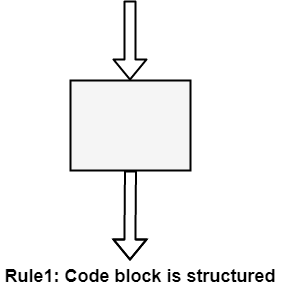
Structure Rule Two: Sequence
A sequence of blocks is correct if the exit conditions of each block match the entry conditions of the following block. Execution enters each block at the block’s entry point and leaves through the block’s exit point. The whole series can be regarded as a single block, with an entry point and an exit point.
Rule 2 of Structured Programming: Two or more code blocks in the sequence are structured, as shown in the figure.
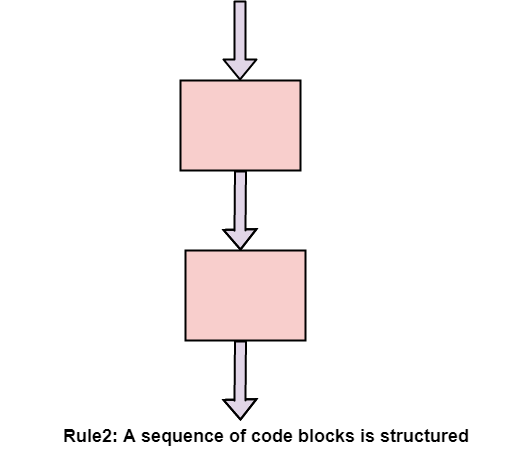
Structured Rule Three: Alternation
If-then-else is frequently called alternation (because there are alternative options). In structured programming, each choice is a code block. If alternation is organized as in the flowchart at right, then there is one entry point (at the top) and one exit point (at the bottom). The structure should be coded so that if the entry conditions are fulfilled, then the exit conditions are satisfied (just like a code block).
Rule 3 of Structured Programming: The alternation of two code blocks is structured, as shown in the figure.
An example of an entry condition for an alternation method is: register $8 includes a signed integer. The exit condition may be: register $8 includes the absolute value of the signed number. The branch structure is used to fulfill the exit condition.
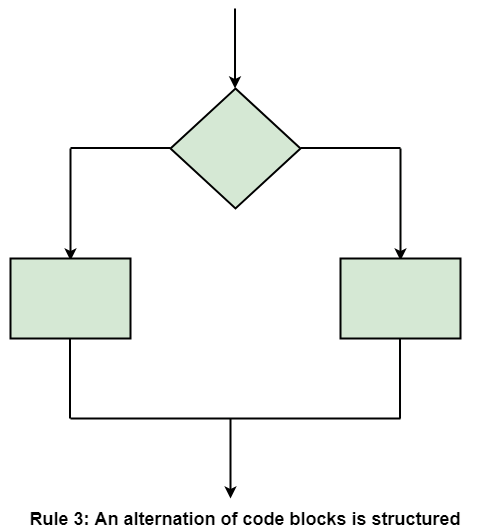
Structured Rule 4: Iteration
Iteration (while-loop) is organized as at right. It also has one entry point and one exit point. The entry point has conditions that must be satisfied, and the exit point has requirements that will be fulfilled. There are no jumps into the form from external points of the code.
Rule 4 of Structured Programming: The iteration of a code block is structured, as shown in the figure.
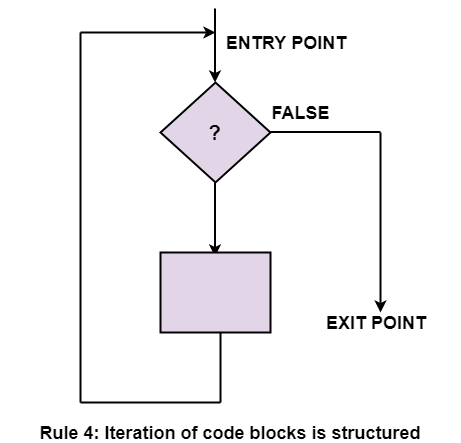
Structured Rule 5: Nested Structures
In flowcharting conditions, any code block can be spread into any of the structures. If there is a portion of the flowchart that has a single entry point and a single exit point, it can be summarized as a single code block.
Rule 5 of Structured Programming: A structure (of any size) that has a single entry point and a single exit point is equivalent to a code block. For example, we are designing a program to go through a list of signed integers calculating the absolute value of each one. We may (1) first regard the program as one block, then (2) sketch in the iteration required, and finally (3) put in the details of the loop body, as shown in the figure.
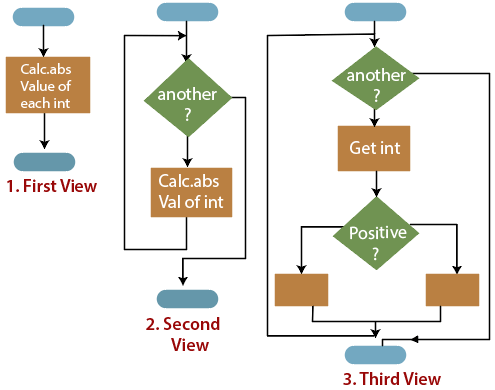
The other control structures are the case, do-until, do-while, and for are not needed. However, they are sometimes convenient and are usually regarded as part of structured programming. In assembly language, they add little convenience.
